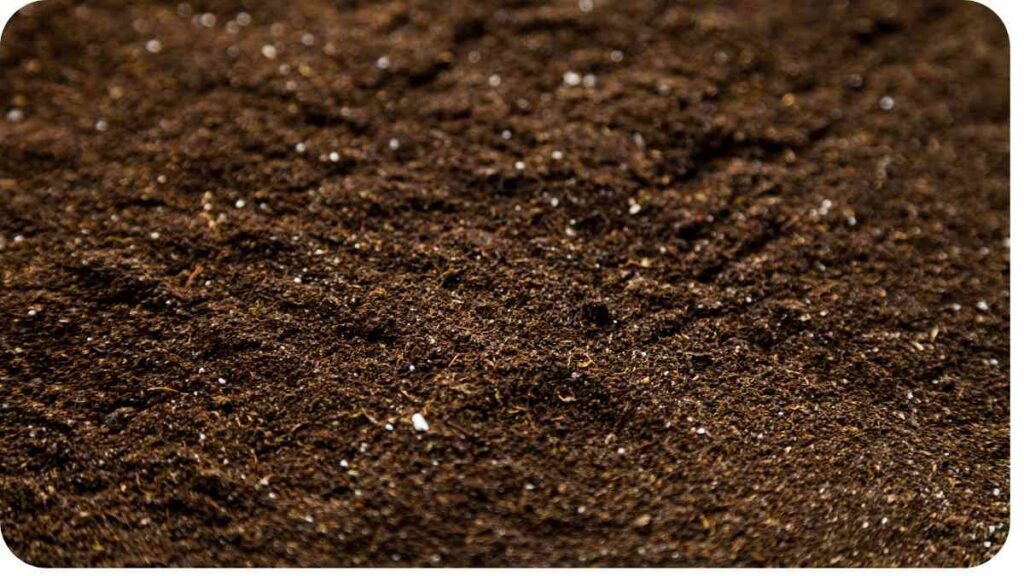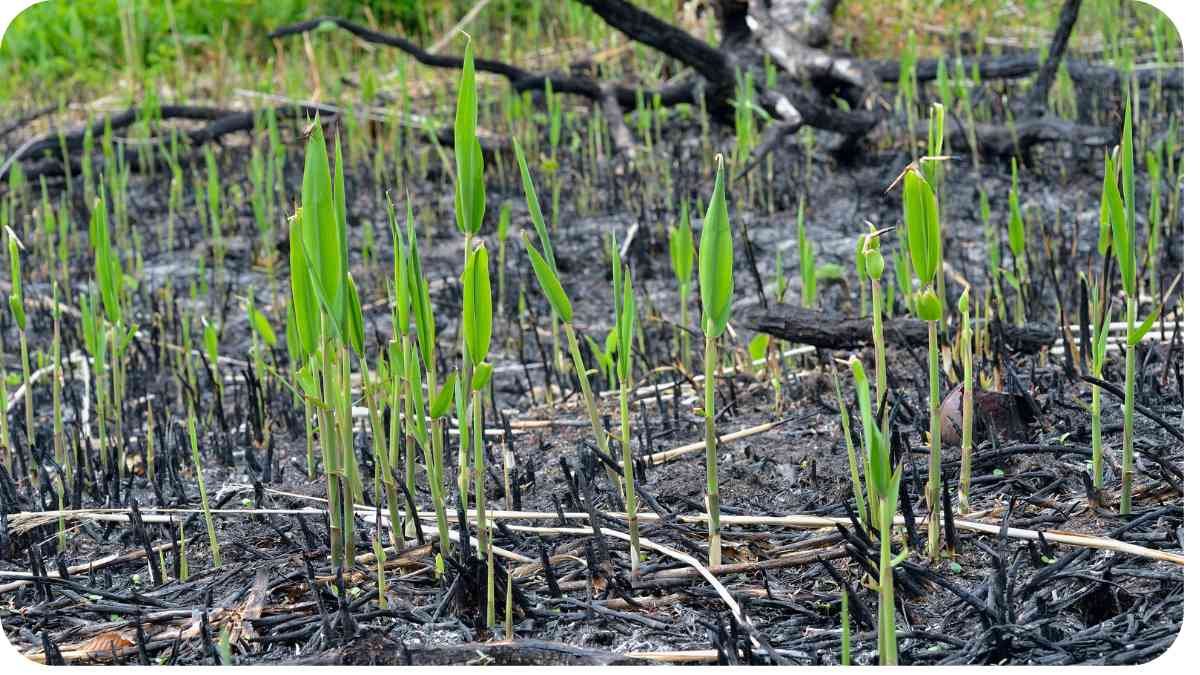Your lawn is the canvas upon which memories are made, where children play, and where you relax on lazy afternoons. However, after a tough season, it may resemble more of a barren wasteland than a lush green oasis. But fear not, for with the right strategies and a little elbow grease, you can revive your lawn and restore it to its former glory.
| Key Takeaways |
|---|
| 1. Assess the damage and identify specific lawn problems. |
| 2. Prepare the soil through aeration and soil amendment. |
| 3. Choose between seeding and sodding based on your preferences and resources. |
| 4. Establish a watering and maintenance routine to nurture newly seeded or sodded grass. |
| 5. Be proactive in dealing with pests and weeds through integrated pest management techniques. |
| 6. Consistency and attention to detail are crucial for successful lawn restoration. |
1. Assessing the Damage
Before diving into restoration efforts, it’s crucial to assess the extent of the damage. Common issues include bare patches, thinning grass, weeds, pests, and compacted soil. Understanding the specific problems your lawn faces will guide your restoration plan.
Integrating Tall Fescue can be a game-changer for reviving your lawn, offering resilience and lushness even after a tough season. Consider this resilient grass variety for a vibrant, enduring lawn.
Table: Common Lawn Problems and Solutions
| Problem | Solution |
|---|---|
| Bare patches | Overseeding or laying sod |
| Thinning grass | Aeration and fertilization |
| Weeds | Herbicide application and manual removal |
| Pests (e.g., grubs) | Insecticide treatment |
| Compacted soil | Core aeration and soil amendment |
Preparing for Restoration
Now that you’ve identified the issues plaguing your lawn, it’s time to prepare for restoration. This phase is crucial as it sets the foundation for successful revitalization. Here’s what you need to do:
Table: Essential Lawn Care Tools
| Tool | Purpose |
|---|---|
| Lawn mower | Trimming grass to an even height |
| Rake | Removing thatch and debris |
| Aerator | Loosening compacted soil |
| Spreader | Evenly distributing seeds or fertilizer |
| Hose or sprinkler system | Watering the lawn consistently |
| Soil test kit | Determining soil pH and nutrient levels |
Having the right tools at your disposal will streamline the restoration process and ensure optimal results.
Once you’ve gathered your equipment, it’s time to tackle the next step in the restoration journey: soil rejuvenation.
4. Soil Rejuvenation

Healthy soil is the cornerstone of a thriving lawn. Before seeding or sodding, it’s essential to ensure that your soil is nutrient-rich and well-balanced. Here’s how to rejuvenate your soil:
- Test the Soil: Use a soil test kit to assess pH levels and nutrient deficiencies. This will guide your soil amendment efforts.
- Aerate: Compacted soil can hinder root growth and water absorption. Use an aerator to perforate the soil, allowing air, water, and nutrients to penetrate deep into the root zone.
- Add Amendments: Based on your soil test results, add appropriate amendments such as compost, lime, or gypsum to improve soil structure and fertility.
As you focus on restoring lushness to your lawn, don’t overlook essential fall cleanup and prep tasks. Transition smoothly into the next season by following these comprehensive gardening guidelines.
Table: Soil Amendment Guide
| Amendment | Purpose |
|---|---|
| Compost | Adds organic matter and improves soil structure |
| Lime | Raises soil pH levels and reduces acidity |
| Gypsum | Loosens clay soil and improves drainage |
| Fertilizer | Provides essential nutrients for plant growth |
Applying these amendments will create an optimal environment for grass growth and vitality. Once your soil is primed and ready, it’s time to decide between seeding or sodding.
Seeding or Sodding
Deciding between seeding and sodding depends on factors such as budget, time constraints, and personal preference. Both methods have their pros and cons, so let’s weigh the options:
Embrace the concept of no-till gardening for a thriving lawn ecosystem without soil disturbance. Cultivate success with this sustainable approach, ensuring soil health and vitality for your lawn revival efforts.
Table: Seed vs. Sod Comparison
| Factor | Seeding | Sodding |
|---|---|---|
| Cost | Lower initial cost | Higher initial cost |
| Time to maturity | Longer time for grass to establish | Instant lawn establishment |
| Variety | Wide selection of grass species available | Limited to what’s available from sod farms |
| Labor | Requires more effort and ongoing care | Less labor-intensive initially |
| Quality | May result in uneven coverage and germination | Instantly provides a uniform, mature lawn |
Consider your priorities and resources when choosing between seeding and sodding. If you’re willing to invest time and effort for long-term results, seeding may be the way to go. However, if you’re seeking instant gratification and are willing to pay a premium, sodding offers immediate results.
Once you’ve decided on the best approach for your lawn, it’s time to move on to the next crucial step: watering and maintenance.
Watering and Maintenance
Proper watering and maintenance are essential for nurturing newly seeded or sodded grass and ensuring its long-term health and vibrancy. Here are some tips to help you keep your lawn hydrated and thriving:
- Watering Schedule: Establish a consistent watering schedule, especially during the establishment phase. Newly seeded areas may require frequent, light watering to keep the soil moist, while sodded areas should be watered deeply but less frequently to encourage deep root growth.
- Timing: Water your lawn early in the morning to minimize evaporation loss and fungal diseases. Avoid watering in the evening, as prolonged moisture can promote fungal growth.
- Monitor Moisture Levels: Keep an eye on soil moisture levels and adjust your watering frequency accordingly. Overwatering can lead to shallow root development and fungal problems, while underwatering can result in stressed, brown patches.
- Fertilization: Apply a balanced fertilizer according to the specific needs of your grass species. Fertilizing in early spring and fall will provide the nutrients necessary for healthy growth and color.
- Mowing: Maintain proper mowing height to promote strong root development and discourage weed growth. Avoid cutting more than one-third of the grass blade length at a time and alternate mowing patterns to prevent soil compaction.
- Weed and Pest Control: Keep an eye out for weeds and pests that may threaten your lawn’s health. Promptly address any infestations or weed outbreaks to prevent them from spreading.
Enhance your lawn’s vitality by incorporating pollinator-friendly perennials into your garden. Attract bees and butterflies while supporting biodiversity, creating a vibrant ecosystem that complements your lush lawn
Dealing with Pests and Weeds

Pests and weeds can wreak havoc on even the healthiest of lawns if left unchecked. Fortunately, there are several strategies you can employ to combat these common nuisances and protect your lawn’s vitality:
- Identify the Culprits: Familiarize yourself with common lawn pests and weeds in your area. Recognizing the signs of infestation early on will allow you to take swift action before significant damage occurs.
- Natural Predators: Encourage natural predators such as birds, ladybugs, and beneficial insects that feed on common lawn pests like grubs, aphids, and caterpillars. Maintaining a diverse ecosystem in your yard can help keep pest populations in check.
- Integrated Pest Management (IPM): Implement an integrated pest management approach that combines cultural, biological, and chemical control methods. This holistic strategy minimizes reliance on pesticides and focuses on long-term pest prevention.
- Selective Herbicides: When dealing with weeds, opt for selective herbicides that target specific weed species without harming desirable grasses. Follow label instructions carefully to ensure safe and effective application.
Table: Common Lawn Pests and Remedies
| Pest | Signs of Infestation | Remedies |
|---|---|---|
| Grubs | Brown patches that detach easily | Apply beneficial nematodes or milky spore |
| Chinch bugs | Yellowing or browning grass, presence of bugs | Apply insecticidal soap or neem oil |
| Crabgrass | Large patches of thick, coarse grass | Apply pre-emergent herbicide in spring |
| Dandelions | Bright yellow flowers, deep taproots | Hand pull or spot treat with herbicide |
| Broadleaf weeds | Varied appearance and leaf shape | Apply selective herbicide according to label |
Healthy Lawn Practices: Maintain a healthy lawn through proper watering, fertilization, and mowing practices. A dense, vigorously growing lawn is better equipped to outcompete weeds and resist pest infestations.- Regular Inspections: Conduct regular inspections of your lawn to identify any signs of pest activity or weed growth. Early detection allows for prompt intervention and prevents issues from escalating.
By incorporating these pest and weed management strategies into your lawn care routine, you can effectively protect your lawn from the destructive effects of unwanted intruders and maintain its lush, vibrant appearance year-round.
Amid challenging seasons, explore xeriscaping as a sustainable solution for a resilient, low-maintenance lawn. Create a drought-tolerant landscape that thrives even in adverse conditions, ensuring long-term lawn health and vitality.
Conclusion
Reviving your lawn after a tough season requires patience, dedication, and a strategic approach. By following the steps outlined in this guide and implementing proper lawn care practices, you can restore your lawn to its former lush, vibrant glory. Remember to:
- Assess the damage and identify specific lawn problems.
- Prepare the soil through aeration and soil amendment.
- Choose between seeding and sodding based on your preferences and resources.
- Establish a watering and maintenance routine to nurture newly seeded or sodded grass.
- Be proactive in dealing with pests and weeds through integrated pest management techniques.
With careful attention and consistent care, you can transform your tired, worn-out lawn into a vibrant outdoor oasis that you can enjoy for years to come. Whether you’re hosting backyard barbecues, playing with your kids, or simply relaxing in the sunshine, a healthy, beautiful lawn sets the stage for countless memories and moments of joy. So roll up your sleeves, grab your tools, and get ready to breathe new life into your lawn!
Further Reading
Here are some additional resources to help you further explore the topic of reviving your lawn:
- How to Bring Your Lawn Back to Life in 5 Simple Steps: Pennington offers a comprehensive guide on reviving your lawn, breaking down the process into five simple steps.
- Reviving Your Lawn After Drought: Scotts provides tips and advice specifically tailored to reviving your lawn after a period of drought, helping you restore your grass to its lush, green state.
- Reviving a Dead Lawn: The Turfgrass Group offers insights and techniques for reviving a lawn that may seem beyond repair, providing hope and solutions for even the most challenging situations.
FAQs
How can I tell if my lawn is dead or just dormant?
If your lawn appears brown and dry, it may be dormant rather than dead. To check, try watering a small area. If the grass regains its green color within a week or two, it was likely dormant. If it remains brown and lifeless, it may be dead.
What is the best time of year to revive my lawn?
The best time to revive your lawn depends on the specific issues you’re addressing. For general maintenance and overseeding, early fall is ideal. However, for more intensive repairs or sodding, early spring or late summer may be preferable.
How often should I water my newly seeded lawn?
Newly seeded lawns require frequent, light watering to keep the soil moist without washing away the seeds. Water lightly two to three times a day, keeping the soil consistently moist but not waterlogged. As the grass grows, gradually reduce the frequency of watering.
Can I revive my lawn without using chemicals?
Yes, you can revive your lawn using natural and organic methods. Practices such as aeration, overseeding, proper watering, and soil amendment can all contribute to a healthy, vibrant lawn without the need for synthetic chemicals.
How long does it take to revive a lawn?
The time it takes to revive a lawn depends on various factors, including the extent of the damage, the methods used for restoration, and environmental conditions. In general, you can expect to see noticeable improvement within a few weeks to a few months of implementing restoration efforts.

Hellen James, a seasoned author at Unified Publishers LLC, brings a wealth of expertise to diverse niches. Specializing in pet care, outdoor adventures, lifestyle, wellness, and culinary delights, Hellen crafts insightful and engaging content that unlocks the full potential of readers’ interests. Explore, learn, and thrive with Hellen James.

